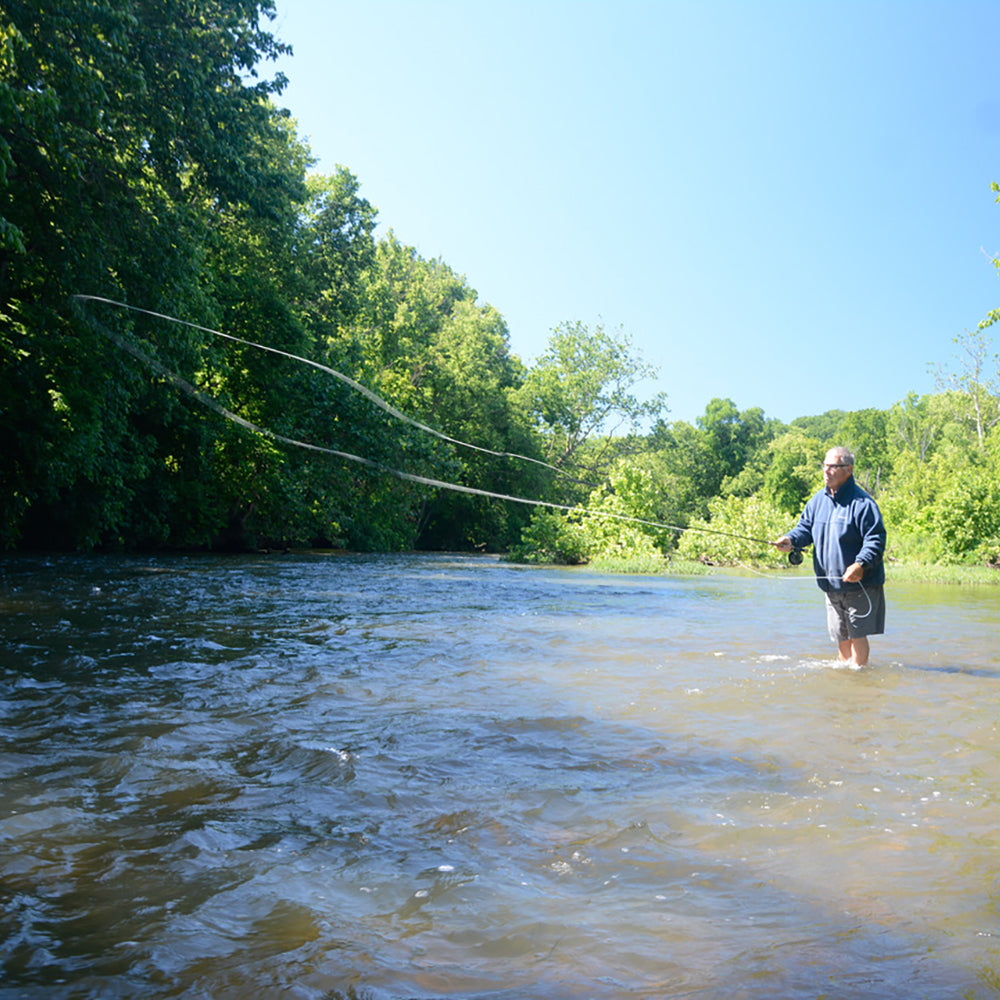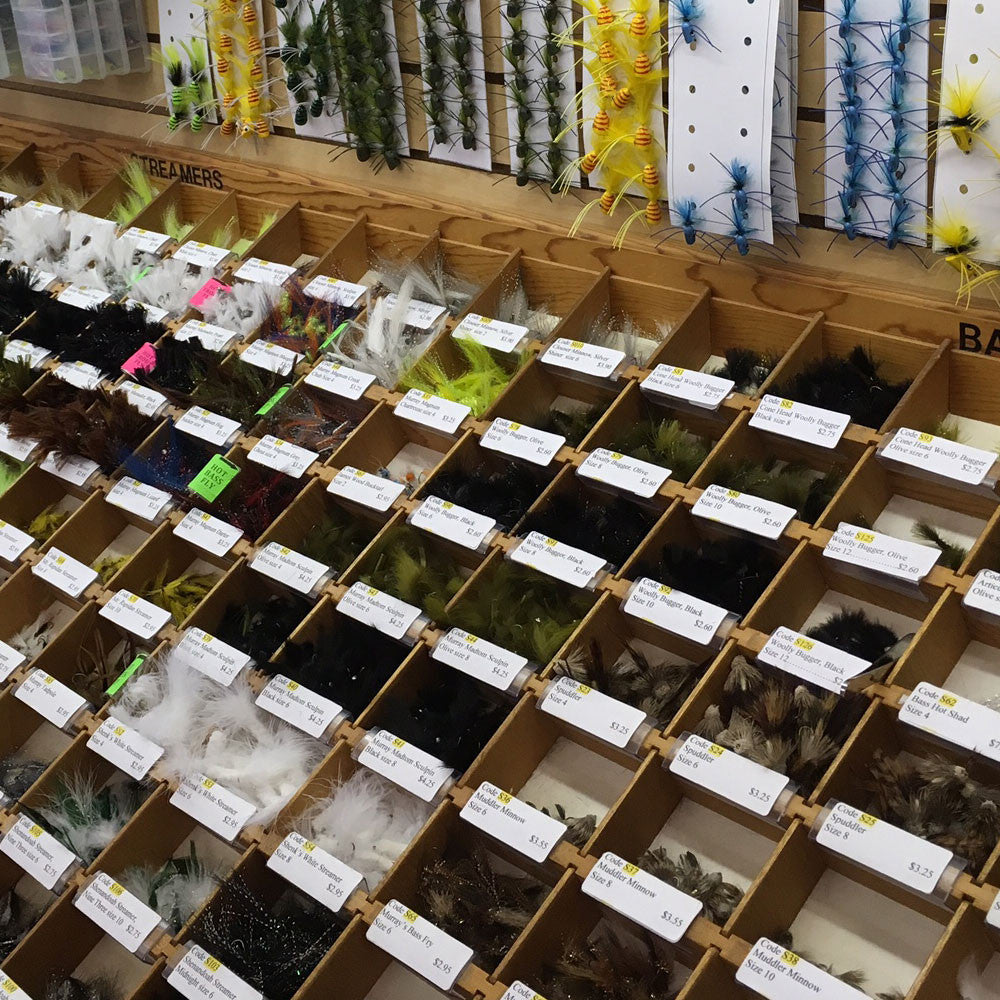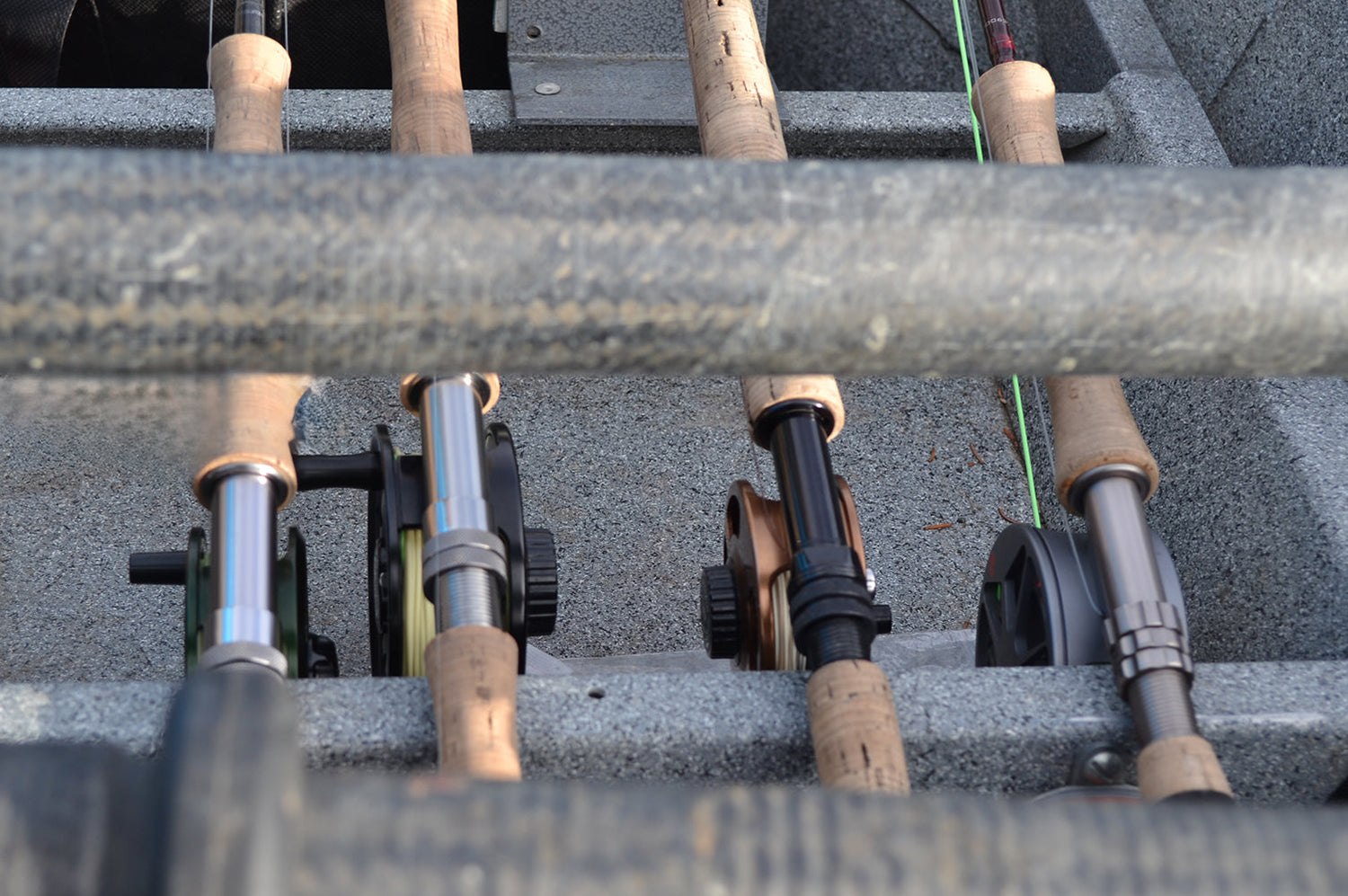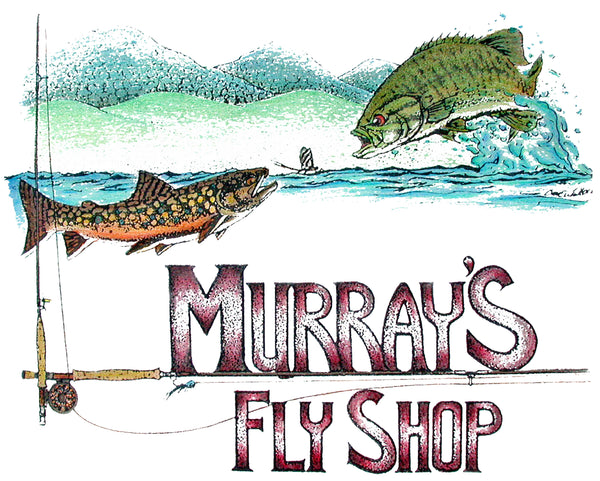Smallmouth Bass Minnow Matching Tactics
Smallmouth Bass Minnow Matching Tactics by Harry W. Murray

For many years serious trout anglers have wisely used a tactic to select the flies which they use on a specific day as "Matching the Hatch". This involves observing the aquatic insects which are hatching from the stream then choosing an artificial fly of the same size and color to duplicate the emerging natural insects...hence they are "Matching the Hatch".
This is such a successful tactic that for many years I've applied it to my smallmouth bass fishing.
I'm very fortunate to have grown up in Edinburg, Virginia right on the bank of the North Fork of the Shenandoah River. From spring to fall I fished almost every day. My favorite baits were the minnows which I caught in the North Fork of the Shenandoah River and Stoney Creek. When I wanted to use a specific minnow for my smallmouth fishing I knew exactly where to go to seine them or catch them on a small worm-baited hook using a cane pole.
After graduating from the School of Pharmacy at MCV in Richmond, I became interested in fly tying. I decided to tie flies which matched the minnows I had caught my smallmouth on as a youngster.
The first minnow I tried to duplicate in my fly tying was the madtom because I had caught many bass on the real minnows, which the river is full of. Today we know this fly as the Murray's Madtom Sculpin. My friend and I would seine the madtoms using a six foot wide seine held between 2 six foot poles. Each of us holding a pole, we would start in the tail of the pools just as it was getting dark. Wading upstream in hip deep water we would catch so many madtoms that we quickly filled our minnow bucket.
Today, these are the areas I fish my Murray's Madtom Sculpin at dusk by using a slow line-hand stripping action to swim it just above the stream bottom.
Since the shape of the sculpin minnow is much like that of the madtom minnow, I use this same fly to fish where I know there are many sculpin minnows. All of the bait fishermen around Edinburg called these "spring minnows". It was many years later before the name sculpin minnow was used in the Shenandoah Valley. Actually the name "spring minnow" is a quick give away which reveals where and how to fish my fly. These sculpins like the clean pure water which flows into the river from the springs. There are large populations of these minnows around the cobblestones where springs are found. I fish my Murray's Madtom Sculpin across stream below the riffles and where feeder streams enter the river.
The hog sucker is a very important food for large smallmouths as I saw the day a bass chased one up on a close by gravel bar that was covered by two inches of water. Before the hog sucker could make his get away the bass had him. At dusk the hog suckers move in along the shallow gravel bars running up and down the river to feed. My favorite tactic is to wade down the river 50 feet to the side of these gravel bars and cast my Murray's Magnum Hog Sucker out across the gravel bar and strip it slowly up the bar. Often a large bass will pull up out of the deep water and grab my fly.

Murray's Magnum Hog Sucker
The smallmouth feed heavily on the blue gills. Many of these live over the marble size gravel in knee deep water along the river banks. A very effective tactic is to wade or float parallel to these banks 40 feet out from them and cast a Murray's Magnum Bluegill in close to the bank and strip it 4 inches every 5 seconds. The strike usually comes in the first foot.

Murray's Magnum Bluegill
Some rivers have very large populations of creek chub minnows. If you are not familiar with these minnows they look like a miniature tarpon. A Murray's Magnum Creek Chub Streamer is a great fly to use when you are floating a river because they live everywhere except in the grass beds. As I'm floating down the river I like to fan my casts over all of the water I come to, paying special attention to the shaded banks. A slow line-hand stripping action usually does the job.
 Murray's Magnum Creek Chub
Murray's Magnum Creek Chub
Shiner minnows are found in large schools and the smallmouths feed on them heavily from spring to fall. In the spring and early summer before the aquatic grass beds form most of the shiners are found over gravel bars in water from a foot to three feet deep. Bass do not seek feeding stations in water this shallow, but feed here by charging into the schools to grab a shiner or two then return to the protection of deeper water close by. However, some bass cruise along the deeper water just beyond the gravel bars and feed on any shiners that stray into the deeper water. I use a Silver Outcast Streamer when I see a bass crash the shallows but go the Murray's Heavy Shiner for those that are feeding in the deeper water.


From mid summer until fall the majority of the shiner minnows are either in or close to the aquatic grass beds. This brings on some of my most enjoyable and successful smallmouth fishing of the year.
Often I wade all the way across the Potomac River at Pack Horse Ford to fish about 200 yards of these grass beds on the west side of the river. Likewise there are many rich grass beds on the South Fork of the Shenandoah River that I walk a great distance to reach. Many evenings at dusk I spot dozens of bass chasing shiner minnows in water a foot deep through the aquatic grass beds along the bank. A very effective tactic is to use a Silver Outcast Streamer and cast it out two feet in front of the bass'es chasing path. These are often very large bass so be patient, wade cautiously and cover all of the water you can get to before dark.

Murray's Floating Dace Minnow
Dace minnows frequently live in the tails of the pools around the cobblestones in water 1-3 feet deep. The bass leave their homes in the evenings to feed heavily on these minnows. Several years ago I developed the Murray's Floating Dace Minnow for just this situation. The bass are very wary in this shallow water. The best way I've found to catch them is to wade into the riffle downstream of the tail of the pool I plan to fish. I wade upstream very carefully to right were the pool above empties into the riffle. From here I fan my casts over all of the water I can reach. I retrieve my Floating Dace Minnow with a strip-pause-strip action where I swim it just slightly faster than the current is pushing it. It is very exciting to see the wake of a bass coming from ten feet away in water a food deep to take my Floating Dace Minnow. I wade slowly upstream using this technique until the water becomes too deep to wade. Often I will then move over to the shallow side of the river and continue this ploy. This technique of fishing my Floating Dace Minnow is very effective right up until dark. Experiment with dressing this Dace with silicone floatant in order to see which gives the best results on each evening.
Those 2-3 inch long minnows with black tails you see in the shallows along the banks from April to June depending on the river are bass fry...that's right they are baby bass. And yes, the big bass eat them. Their best protection is to dash back under the edge of a ledge or an old downfall. The Murray's Bass Fry Streamer is very effective fished along the banks. I cast this streamer close to the bank and strip it six inches every five seconds. The strike usually comes within two feet of the bank. Frequently some very large bass feed on this fry so I use a firm line-hand strike as well as a fast rod-lifting strike.
 Murray's Bass Fry
Murray's Bass Fry
In summarizing, my goal in this minnow-matching approach is to catch more large smallmouth bass.

-

Learn Fly Fishing at Murray’s Fly Shop: Classes, Workshops & Schools
Welcome to Murray’s Fly Shop – Your Fly Fishing Learning Hub At...
-

Featured Flies of the Month
Harry Murray's recommended fly list for this time of the year. (March...
-

Fly Fishing Rod Outfits
Fly Fishing Rod and Reel Outfits for Smallmouth Bass fly fishing, Trout...




